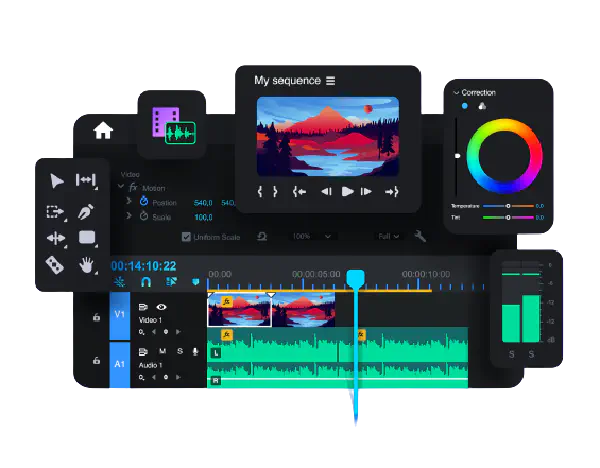
Video editing is a powerful tool for storytelling, but it can also be a time-consuming and challenging process. Image processing can help artists and designers push the boundaries of creativity in video editing by automating tasks, enhancing footage, and creating new effects.
Automating tasks
Image processing can be used to automate many of the repetitive tasks involved in video editing, such as color correction, object tracking, and scene detection. This can free up artists and designers to focus on more creative aspects of the editing process.
For example, image processing can be used to automatically adjust the color of a video clip to match the color of another clip. This can be useful for creating a consistent look and feel throughout a video.
Image processing can also be used to automatically track an object in a video clip, such as a person or a car. This can be useful for creating effects such as motion tracking or object removal.
Enhancing footage
- Reduce noise and grain in footage
- Sharpen blurry images
- Increase the brightness and contrast of footage
- Correct the color of footage
- Remove unwanted objects from footage
Creating new effects
- Change the style of a video to make it look like a painting, a cartoon, or a vintage film
- Create surreal and dreamlike effects
- Add visual effects to videos, such as explosions, fire, and smoke
- Create interactive videos that allow viewers to participate in the story
Examples
Here are a few examples of how artists and designers are using image processing to push the boundaries of creativity in video editing:
Music video director Michel Gondry is known for his innovative use of image processing in his music videos. For example, in the music video for the song “Blue (Da Ba Dee)” by Eiffel 65, Gondry used image processing to create the effect of the band members’ heads being replaced with balloons.
Filmmaker Christopher Nolan used image processing to create the realistic special effects for his films such as Inception and Interstellar. For example, in the film Inception, Nolan used image processing to create the effect of the characters falling through the air in slow motion.
Video game company Naughty Dog uses image processing to create the realistic cinematics for its games such as Uncharted 4: A Thief’s End and The Last of Us Part II. For example, the company used image processing to create the effect of the characters’ facial expressions changing dynamically as they speak.
These are just a few examples of how image processing is being used to push the boundaries of creativity in video editing. As image processing technology continues to develop, we can expect to see even more innovative and creative uses of image processing in video editing in the future.
Conclusion
Image processing is a powerful tool that can help artists and designers push the boundaries of creativity in both 3D art and video editing. By automating tasks, enhancing footage, and creating new effects, image processing can help artists and designers create more engaging and visually appealing content.